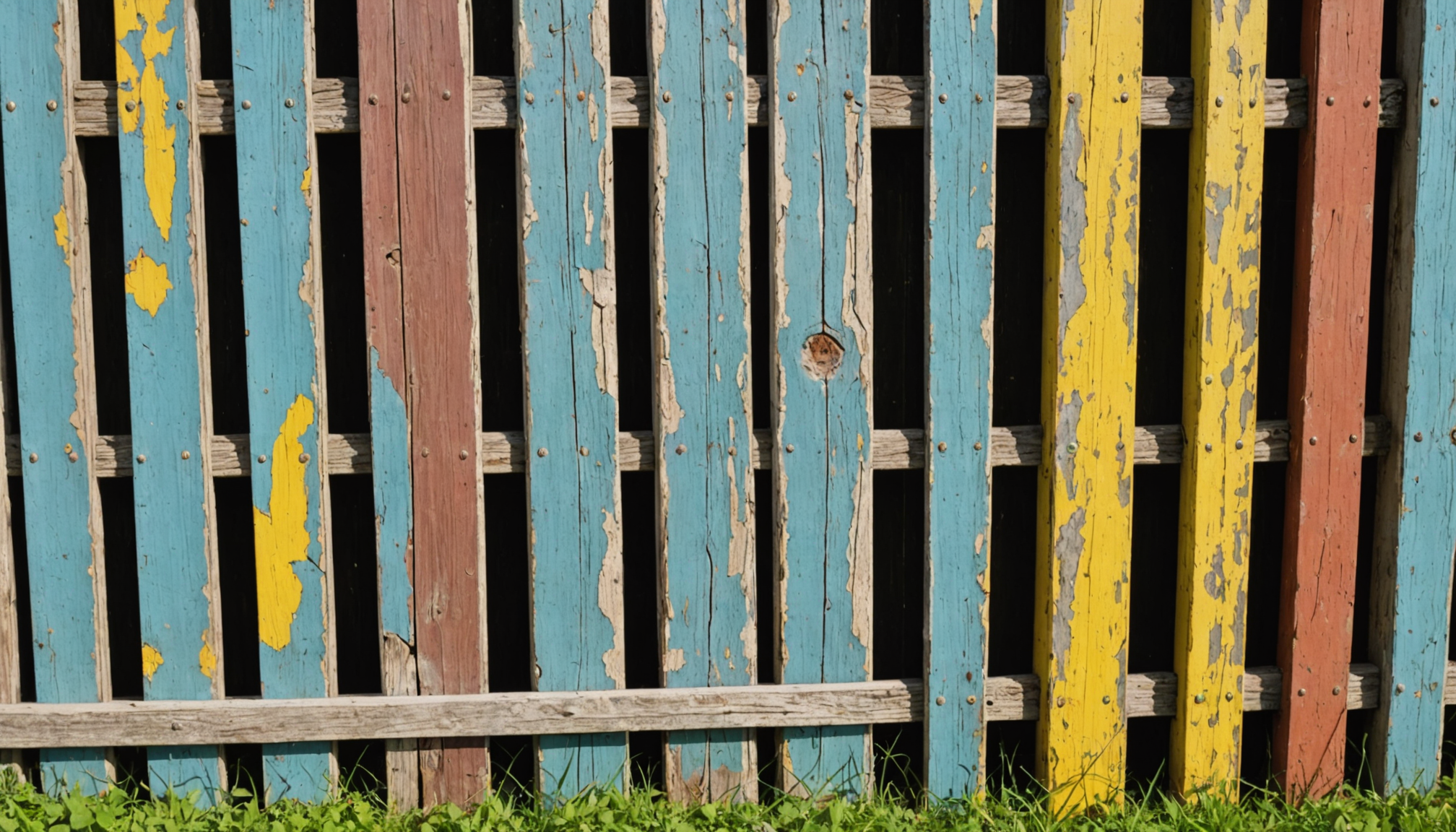When considering fence repair, several factors can significantly influence the overall cost. These factors range from the type and extent of damage to external considerations like local labor rates and environmental conditions. Understanding these elements can help homeowners better anticipate expenses and make informed decisions.
The first major factor is the type of fence material involved. Different materials have unique attributes that affect their durability and repair complexity. For instance, repairing a wooden fence is often different from repairing a chain-link or vinyl fence. Wood may require replacement of rotten sections or repainting, while vinyl might necessitate special patch kits or new panels if damaged.
Another critical consideration is the extent of the damage to the existing structure. Minor repairs, such as tightening a few loose screws or replacing a small section of fencing, typically incur lower costs than substantial damage, which might involve post replacement, re-leveling, or significant structural repairs. This leads to variable labor requirements, directly impacting the total repair costs.
Environmental factors can also play a role. In regions prone to harsh weather conditions like heavy snowfall, strong winds, or intense sun, fencing is more susceptible to rapid wear and tear. This calls for more frequent repairs, potentially increasing the maintenance costs over time. Similarly, proximity to salty coastal air can accelerate corrosion in metal fences, again influencing repair needs and costs.
Labor costs are another crucial factor affecting fence repair expenses. These costs can vary greatly depending on the geographical location. Urban areas with a higher cost of living may have higher labor rates compared to rural regions. Additionally, the availability of skilled labor in the local area can influence how much one might pay for professional services.
For a clearer understanding, the table below provides an overview of how these factors can influence repair costs:
| Factor | Influence on Repair Costs |
| Material Type | Wood (Moderate), Vinyl (High), Chain-link (Low) |
| Extent of Damage | Minor (Low), Moderate (Moderate), Severe (High) |
| Environmental Exposure | High (Coastal, Severe weather), Low (Mild climate) |
| Local Labor Costs | High (Urban), Medium (Suburban), Low (Rural) |
By considering these factors, homeowners can better strategize their fence repair plans, potentially reducing unnecessary expenses and extending the life of their fencing. Understanding how each component affects the cost will also aid in budgeting both for current and future home exterior maintenance needs.
Average repair costs for popular fence materials
When it comes to determining the average repair costs for various popular fencing materials, several elements come into play that can significantly affect the expense. Understanding these costs associated with different materials will help homeowners make informed decisions based on their budget and the specific needs of their home exterior.
1. Wooden Fences:
– Minor Repairs: Simple fixes such as patching small holes or realigning a post might cost around $100 to $300, depending on local labor rates. These repairs can often be done in a single visit.
– Moderate Repairs: Replacing a section of the fence due to rot or termite damage might run anywhere from $400 to $800. This might include replacing several boards or reattaching whole panels.
– Major Repairs: Significant damage, such as multiple posts needing replacement or full sections of wooden fencing succumbing to rot, could cost upwards of $1,000 to $2,500. This cost often includes labor and materials.
2. Vinyl Fences:
– Minor Repairs: Small cracks or holes might be patched for as little as $150 to $400. Vinyl repair kits are often essential for these quick fixes.
– Moderate Repairs: For moderate damage, such as a few panels needing replacement due to impact or weather conditions, costs can range from $500 to $1,000.
– Major Repairs: Repairing extensive damage in a vinyl fence could cost between $1,500 and $3,500. This might include replacing entire sections where vinyl panels have become brittle or severely cracked.
3. Chain-Link Fences:
– Minor Repairs: Small areas of rust or isolated damage can often be repaired for $100 to $250. This often includes removing rust spots and applying protective coatings.
– Moderate Repairs: Replacing a small section that has been damaged can cost from $300 to $700. This typically involves cutting out the damaged section and replacing it with new chain-link fabric.
– Major Repairs: Major repairs, such as replacing a long section of fencing or multiple posts, can range from $800 to $1,800. These repairs are usually necessary after severe weather or when the fence has significant structural issues.
4. Aluminum or Metal Fences:
– Minor Repairs: Patching a small dent or fixing a loose connection might run around $200 to $400.
– Moderate Repairs: Repairing paint damage or replacing a few panels due to aesthetic or functional issues can cost $500 to $1,200.
– Major Repairs: For extensive structural damages to metal fencing, such as badly bent or severely damaged sections, homeowners could expect costs from $2,000 to $4,000.
In addition to these general cost estimations, it’s essential to consider the regional variations in repair costs, driven largely by local labor costs. Urban areas typically have higher labor rates, which can significantly affect the overall expense of fence repairs. When planning for these repairs, homeowners should also factor in potential environmental exposures, such as salt air in coastal areas, which might necessitate more frequent repairs for materials like metal or chain link. By understanding these average repair costs across different fencing materials, homeowners can better plan and budget for future fence repair needs, ensuring they maintain their yard’s aesthetics and functionality over time.
DIY vs professional repair: pros and cons
Opting between DIY and professional repair for your fence involves considering various factors that impact the overall effectiveness and cost-efficiency of the project. It’s crucial to weigh the options carefully, as each approach comes with its unique set of advantages and potential drawbacks.
DIY Repairs present several appealing benefits, primarily related to cost savings. By handling the repairs yourself, you can avoid labor charges, which are often a significant portion of the total repair cost. This approach particularly suits individuals who have strong handy skills or have had prior experience with similar home projects. Additionally, DIY repairs offer the flexibility of scheduling the work at your convenience, allowing for adjustments based on personal timelines and the availability of materials. Furthermore, by overseeing the process personally, you have complete control over the choice of materials, ensuring that quality and aesthetics align with your preferences.
However, diving into a DIY repair project without the necessary skills or understanding can lead to unexpected challenges and increased expenses. For instance, incorrectly installed or repaired fences might result in further damage over time, potentially necessitating additional fixes that could outweigh initial cost savings. Additionally, without professional tools, achieving precise and durable results might be difficult, compromising the fence’s longevity.
On the other hand, hiring professionals brings the assurance of expertise and experience. A skilled contractor can quickly assess the extent of damage and recommend solutions that provide a long-term fix. Professionals generally have access to the best tools and equipment, ensuring efficient and effective repairs. Taking advantage of their proficiency can lead to high-quality workmanship, resulting in a sturdy and aesthetically pleasing fence in a relatively short time. Moreover, reputable contractors often offer warranties on their work, offering peace of mind and additional protection against future issues.
Nevertheless, the costs of professional repairs are typically higher due to labor fees, and the need to match specific parts or materials can further increase expenses. There might also be waiting periods depending on the professional’s availability, which could delay urgent repairs, particularly if local demand for fencing services is high during certain times of the year.
In making a choice between DIY and hiring professionals, consider not only the initial cost difference but also the long-term implications on the durability and appearance of your fence. Weighing these pros and cons carefully can help you make an informed decision, one that aligns with your budget, skill level, and overall goals for your home exterior.
Tips for saving money on fence repairs
When it comes to minimizing your fence repair costs, a strategic approach is key. One effective way to save money is by conducting regular inspections of your fencing. By catching minor issues early, such as loose nails, small cracks, or slight warps, you can prevent them from escalating into larger problems that require extensive repairs. Incorporating a bi-annual check into your home maintenance routine, particularly in the spring and fall, will help identify weather-related damage before it worsens.
Another practical tip is to gather multiple estimates from local repair experts. Finding a reputable contractor through resources like LocallyFind.com can allow you to compare prices and assess the quality of different service providers before committing. This approach not only helps you find the best price but also ensures you receive quality service, preventing the need for future repairs.
Purchasing repair materials in bulk or sourcing materials from bargain outlets can also reduce costs significantly. Many vendors offer discounts on larger purchases, which can be advantageous if you anticipate multiple or ongoing repairs. Consider partnering with a neighbor for purchases or projects, as joint ventures can improve buying power and share costs, particularly in urban or suburban communities where fence styles are similar.
Performing simple repairs and preventative maintenance yourself, when feasible, can further cut down on expenses. Tasks such as painting or staining a wooden fence not only improve its appearance but also provide an extra layer of protection against the elements, extending its lifespan. Just remember to balance DIY efforts with your skill level to avoid potentially costly mistakes.
In addition, maintaining your yard can play a crucial role in mitigating fence repair costs. Vegetation, such as trees or bushes, growing too close to the fence can cause physical damage or facilitate rot. Keeping these plants trimmed and ensuring proper drainage around the fence base can prevent unnecessary wear and tear, ultimately preserving the structure and reducing the need for repairs.
Lastly, engaging in a seasonal maintenance regimen helps manage long-term costs. While this requires some upfront investment of time or money, such as treating a fence with weather-resistant solutions, it can drastically reduce future repair expenses. By keeping your fence in optimal condition, you not only enhance your yard’s aesthetic but also protect your investment.
In summary, staying proactive with your fence maintenance and being resourceful about repairs can lead to significant savings. For personalized advice or to connect with local professionals, visit LocallyFind.com, a comprehensive home services directory that makes it easy to find and compare service providers for all your fence repair needs.
Preparing for future fence maintenance costs
Planning ahead for future fence maintenance costs involves understanding several key strategies to help homeowners effectively budget and manage expenses over time. One of the primary considerations is developing a routine maintenance schedule. This should include regular inspections at least twice a year to identify early signs of damage such as rotting wood, rust on metal fences, or loose panels in vinyl fences. By catching these issues early, you can address minor problems before they escalate into costly repairs, thus effectively managing your financial investment in your yard’s fencing.
Another important strategy is setting aside a dedicated maintenance fund. By allocating a small amount of money each month specifically for home exterior repairs, including fence repairs, homeowners can build a financial cushion. This proactive saving can alleviate the financial impact of sudden repair costs, making it easier to handle unexpected expenses without straining the overall household budget.
Homeowners should also stay informed about local weather patterns, as these can significantly affect the lifespan and health of fencing. Regions experiencing frequent extreme weather conditions, such as heavy snowfall or high winds, may necessitate more frequent repairs or tougher, more durable fencing materials. In such cases, anticipating potential damage and preparing accordingly can minimize long-term repair costs.
Being aware of local trends in fencing materials and technologies can also be beneficial for future maintenance planning. Advances such as weather-resistant coatings or improved materials can extend the lifespan of fences and decrease maintenance requirements. By staying updated with industry innovations, homeowners can make informed decisions on when it might be smart to upgrade their fence, ultimately saving money through decreased repair needs.
Moreover, building strong relationships with local service providers can be advantageous. Establishing a rapport with a trusted contractor might lead to discounted maintenance services or priority scheduling in times of urgent needs. They can also provide personalized advice tailored to your specific locality and fencing type, leading to more effective maintenance and repair strategies.
In conclusion, the cost of fence repair in 2025 will be influenced by various factors, including material type, damage extent, and environmental conditions. Homeowners should consider these factors when budgeting for repairs. Weighing the pros and cons of DIY versus professional repairs, as well as implementing money-saving strategies and planning for future maintenance, can ensure long-term cost efficiency and a well-maintained yard.


